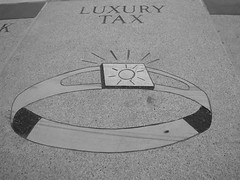UPDATED 2013
Perhaps I should subtitle this: Who Are All These Rich People Who Don’t Pay Any Taxes and How Come I’m Not One of Them?
It’s frustrating isn’t it? You work hard for your money, you’re taxed at 28-35% federally, plus your state tax, real estate tax, sales tax, etc., and then you hear on the news about all these rich people who don’t pay enough in taxes. Makes you want to scream, doesn’t it? And I haven’t even mentioned AMT yet!
As a wage earner, you’re kind of stuck (The rich people with really low income tax rates aren’t wage earners like you, but I’m guessing you knew that anyway.) You’re going to receive a W-2 that reports your income and – let’s face it – it is what it is. But that’s a good thing, be glad you have a job that earns you good money. But the goal here is find ways to reduce that taxable income.
Easy one first: max out your 401(k) plan. This one is so basic I wouldn’t even think to say it, but I’m shocked and amazed by the number of high income wage earners who don’t do this. Those of you who work for companies where you get kicked out of the plan because not enough lower income employees participate are exempt from this scolding-that’s a whole other problem that I don’t have a cure for. But if you’re making enough money to be reading this post, then you need to maximize your 401(k) contributions. For 2013 and 2014, the maximum amount you can defer is $17,500. (If you’re in the 33% tax bracket, then that’s over $5,000 in tax savings!) If you’re over 50, you may defer $23,000.
Cafeteria plans: These are those other services that you can set aside money for—tax free, to be used later to pay for health care or child care expenses. Some companies have a huge selection of these benefits, but health and child care are the two most common ones. There’s a hitch with cafeteria plans though, it’s use it or lose it so don’t put aside more money than you intend to spend.
People often ask about the tax credit they can get from paying for day care service and don’t they lose the credit if they pay for day care through their work. That’s true. But look at the reality—at your income, the best you’re going to get in a tax credit is 20% of what you spent on daycare. By paying your child care expenses out of your cafeteria plan, you’re saving whatever your tax rate is so you’re better off. Any child care money that wouldn’t qualify for the child tax credit will be regular taxable income to you.
As a high income earner, you’ve probably already met my not-so-good friend Mr. Alternative Minimum Tax. The AMT winds up costing you many of the deductions that other taxpayers usually claim, but this is a tip that’s important for you to know. While the AMT may eat away many of the deductions that you could have claimed on your Schedule A form, it’s still a good idea to do the paperwork anyway. Depending upon what state you live in, you can often claim your itemized deductions in your state even though they were lost on your federal return. Not all states do this and you might need to play around to see what works best for you.
For example: here in Missouri, you can’t claim a deduction for your state income tax paid, but if you substitute state sales taxes paid on your schedule A then that’s still a deduction. For most people, state income taxes paid is a much bigger deduction than state sales tax. But if you’re dealing with AMT then claiming the lower state tax amount paid doesn’t change your federal taxes—you’ve still got the same tax liability either way. So, in Missouri you’ll want to claim the sales tax rate instead of income tax so that you get the larger deduction on your Missouri state taxes. Also, by doing this it makes your state refund not taxable for next year, and let’s face it, you don’t need any more taxable income.
Many of the tax programs give you updates on how an item on your tax return affects your federal taxes. If you’ve played around with this you’ve probably given up claiming certain deductions, (like state income tax and employee business expenses.) But make sure that you check the value that these deductions have on your state return, you don’t want to miss out on anything that you can possible claim.


